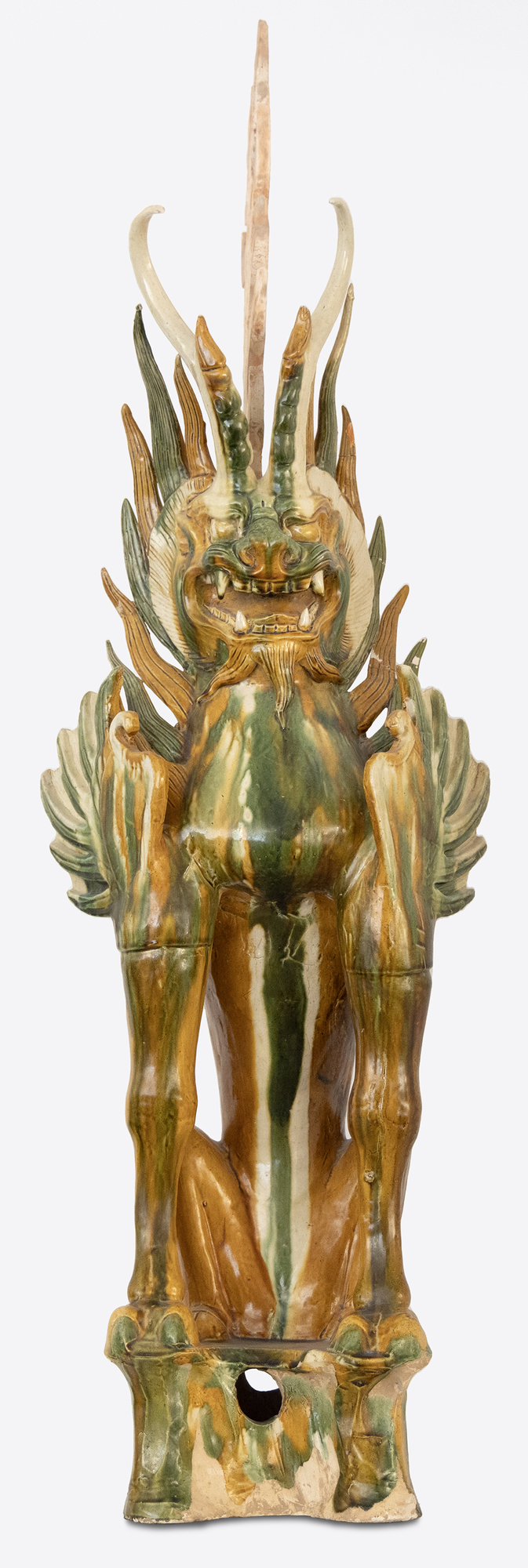中国語










出所
プライベートコレクション (ワシントン州)125,000
今回出品された三彩釉地霊は「鎮守府」を描いている。これは、犬、獅子、猪などの動物が合体した神話上の混血動物である。唐代の墓の入り口を守るために、この獰猛な姿の獣が対になっているのが見られる。










125,000